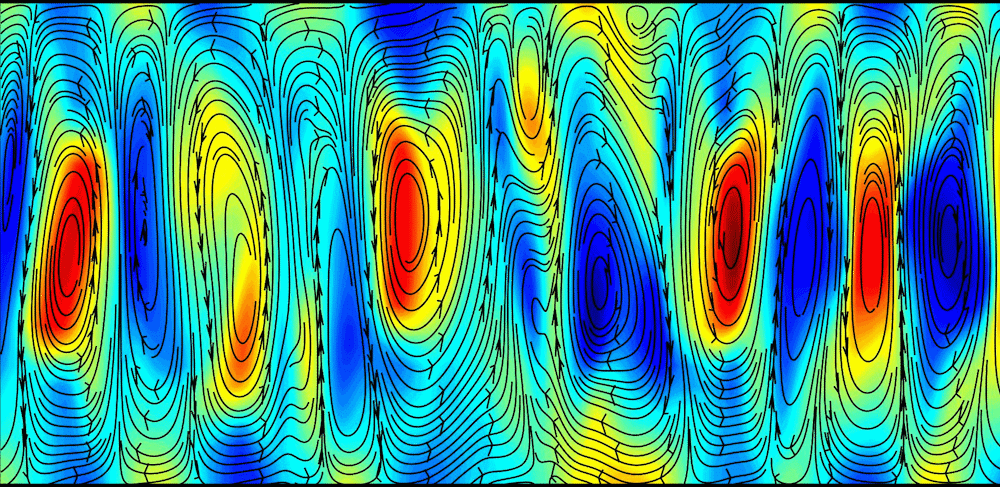Swirling swarms of bacteria offer insights on turbulence

When swimming together, bacteria produce swirling patterns that can disintegrate into turbulence as they speed up.
Credit: Kristian Thijssen
In the bacterial world, as in the larger one, beauty can be fleeting. When swimming together with just the right amount of vigor, masses of bacterial cells produce whirling, hypnotic patterns. Too much vigor, however, and they descend into chaotic turbulence.
A team of physicists led by Rockefeller University fellow Tyler Shendruk recently detected a telling mathematical signature inscribed in that disintegration from order to chaos. Their discovery, described May 16 in Nature Communications, provides the first concrete link between turbulence in a biological system and within the larger physical world, where it is best known for buffeting planes and boats.
A fluid that moves itself
In physical systems, turbulence emerges when the smooth flow of a liquid or gas is disrupted, producing unpredictable swirls like those in billowing smoke, foaming surf, and a stomach-dropping flight. Try as they might, scientists still cannot predict precisely how smoke, water, air, or any other substance will move about during turbulence.
Something similar appears to happen within certain biological systems. Recently, scientists have discovered a turbulence-like dynamic emerging from what they call active fluids, such as a dense mass of swimming bacteria or a collection of movement-generating proteins suspended in liquid. Unlike a drop of water, these active fluids move on their own power. The biological turbulence they generate therefore differs in some significant ways from the physical phenomenon, and the relationship between these two types of turbulence remains controversial and poorly understood.
Shendruk’s recent discovery bridges the two by showing that as it emerges and propagates, turbulence follows the same pattern in masses of swimming bacteria as it does in air, water, or any other physical system.
Descent into chaos
In research that began with Julia Yeomans at the University of Oxford, Shendruk and his colleagues created a computer simulation of bacteria swimming with increasing vigor within a confined channel.
In their models, once bacterial activity reaches a certain point, a rhythmic pattern emerges with alternating clockwise and counterclockwise vortices. But as the swimming becomes even more vigorous, the pattern begins to break down. Turbulence first emerges as puffs that briefly disrupt the pattern, then die away.
When Shendruk, a fellow at the Center for Studies in Physics and Biology, and his colleagues took a close look at how the puffs propagated, they found that once these irregularities emerged, they branched out unpredictably, sometimes dying, sometimes continuing on to split again.
These branches ultimately formed paths (right) that resembled the movement of hot water through coffee grounds. Like the percolating water, the puffs must continually split for turbulence to spread and eventually overtake the orderly swirls.
Coffee percolation is a familiar metaphor for physicists, one that is used to describe how physical turbulence behaves as it spreads. By identifying the same progression from order to disorder among the swimming bacteria, Shendruk and his colleagues effectively bridged the divide between the turbulence of active fluids and that seen elsewhere in the world.
“By linking the physical and biological phenomena, this discovery broadens the family of phenomena considered to be turbulence,” Shendruk says. “This connection may help us better understand turbulence itself, as well as the dynamics within these bacterial flows.”



